By Mark Fowler, former Nature Initiative Director
With spring, comes the emergence of a beautiful and diverse ecosystem that is supported by our vital pollinators, bees, birds, butterflies and beneficial insects. Without these pollinators we simply can’t exist. But, we can help support them in a number of ways by acting as environmental stewards.
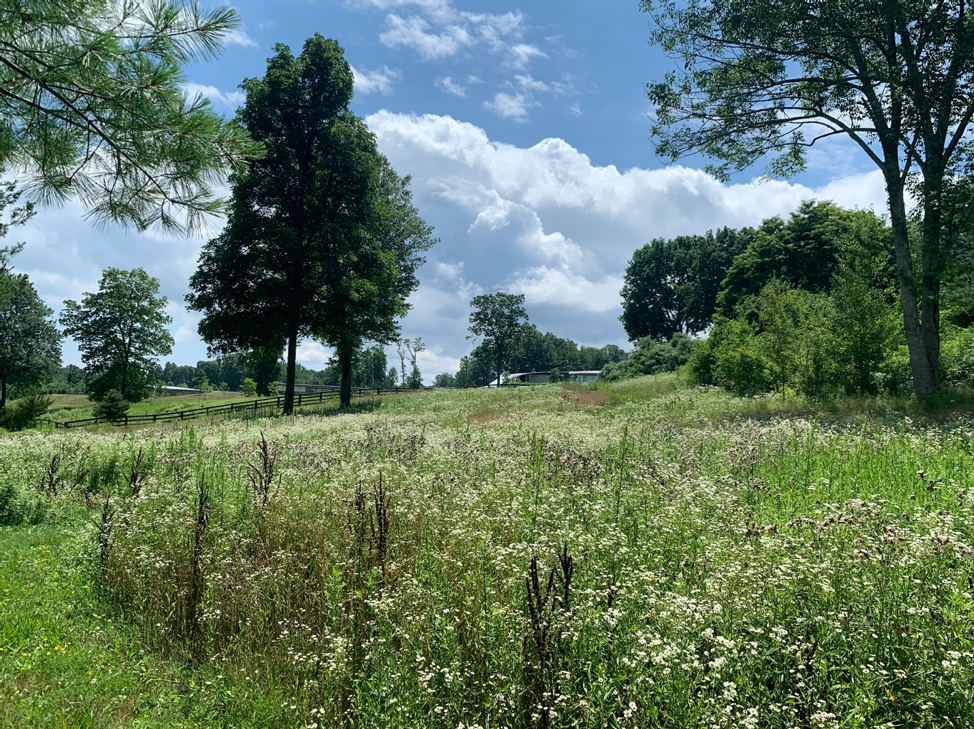
The restoration of Grace Farms’ 80 acres tells a hopeful story of how we can preserve and restore pollinators and wildlife habitat.
Let’s first consider how pollinators are so intrinsic to our lives, besides the beauty and joy they bring.
Pollinators allow plants to reproduce in our urban and rural landscapes. This reproduction provides the food we eat, from carrots in our salads to the wheat that goes into making bagels. The impact of pollinators is enormous, not only in sustaining us and our global food system, but pollinators add billions to our global economy.
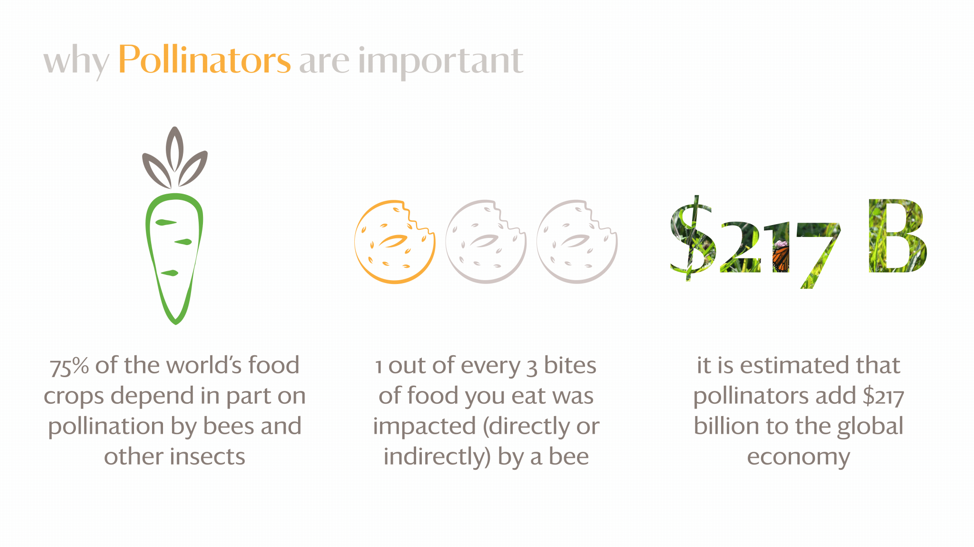
Source: Grace Farms Foundation/Food and Agriculture Organization of the United Nations
Pollinators & Our Food Relief Efforts
The honey bee is perhaps the most revered pollinator because we are so dependent on this non-native species for large-scale global food production. In our Community Garden, all of our growing is now dedicated to food relief. Since last March, we grew over 200,000 pounds of fresh food and helped over 80,000 families and individuals in need. We had always contributed to community food relief efforts, working with our partners such as Person-to-Person, but COVID has impacted many families and individuals, leaving 1 and 7 of our neighbors without enough food.
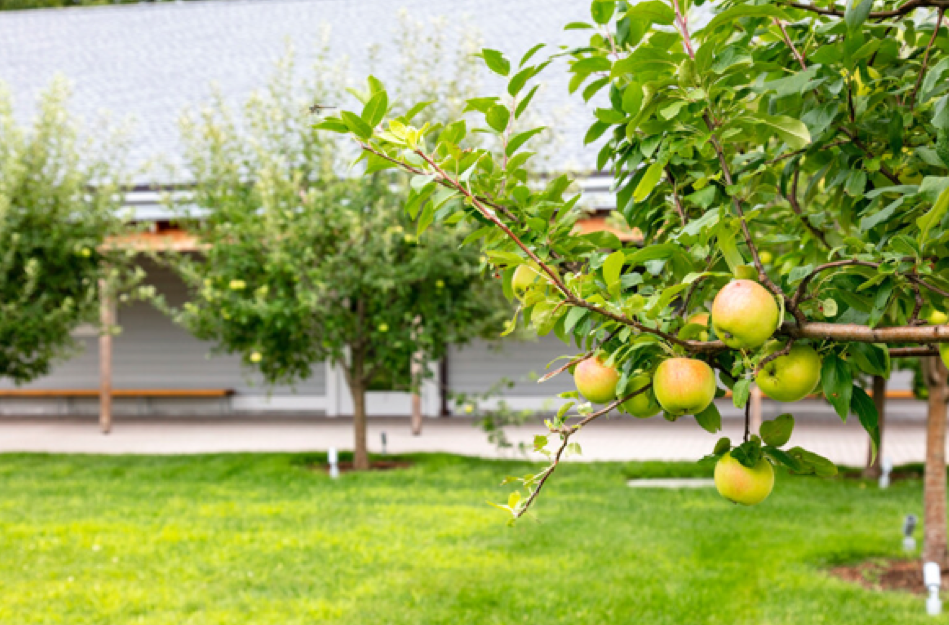
The fruit orchards in our Plaza are also part of our relief efforts, producing over 600 pounds of apples and plums. Photo by Sahar Coston-Hardy
So, can you see the tangible connection between the vital work our pollinators perform and how it truly impacts our lives? With up to 75% of our world food crops depending on pollination, without pollinators, we wouldn’t be able to put food on our tables or provide food relief to those in need.
Learn about Grace Farms’ apiary and how our honey bees help to support our Community Garden.
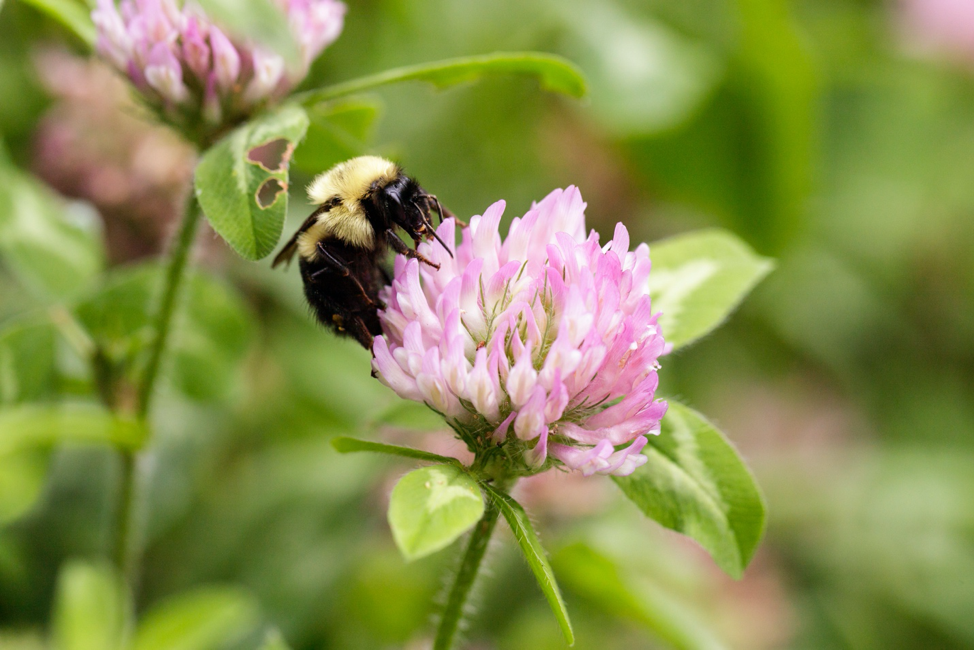
Bumble bees are drawn to the native plants at Grace Farms. Photo by Julien Jarry.
Our bumble bee is a native bee. They are “excellent” pollinators and their longer tongue and wing vibrating tendencies make them more efficient pollinators for some plant species, according to Clemson University. But their natural nesting habitats have been reduced by industrial and residential expansion, upsetting their underground habitat nests.
- There are 4,000 species of native bees in the U.S.
- Source: Pollinator Pathways
- Flying insect populations declined by more than 75% over the duration of a 27-year study.
- Source: Radboud University in the Netherlands and the Entomological Society Krefeld in Germany
- Monarch butterflies have declined by 94.6% in the last 20 years.
- Source: US Wildlife Federation
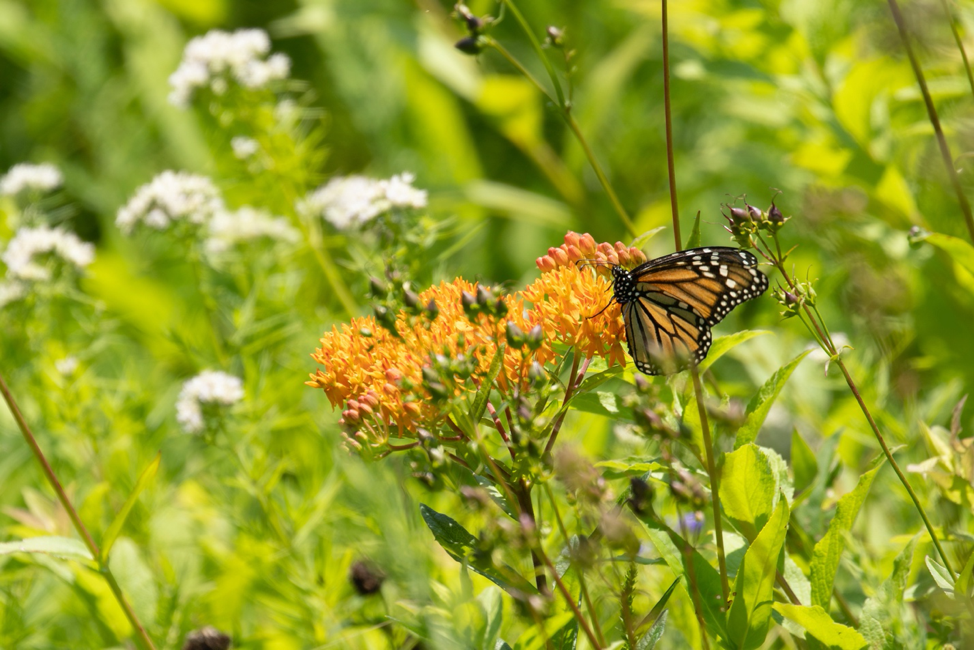
Another important pollinator is the Monarch, which is in drastic decline due to pesticides and loss of habitat. Photo by Julien Jarry.
How You Can Help: Educate Yourself
We offer ongoing multi-generational programming where the public can explore our native meadows, woods, wetlands, and ponds and learn how to support pollinators and be environmental stewards. Signup for our monthly newsletter to stay abreast of our work and upcoming virtual events.
Join the Pollinator Pathways Movement
In June 2019, New Canaan officially joined the Pollinator Pathway movement. Grace Farms, along with other organizations including The New Canaan Land Trust, also joined the movement, which encourages the creation of native pollinator friendly habitat corridors on private and public properties.
Pollinator Pathway – “A grass-roots movement is transforming traditional landscapes into pollinator way stations” – Natural History magazine
To date, the conservation commissions of 125 towns in Connecticut and adjacent New York State have joined Pollinator Pathway and are working on projects in their towns.
Plant Native and Why
“A plant is considered native if it has occurred naturally in a particular region, ecosystem, or habitat without human introduction.” – National Wildlife Foundation
When we restored our Grace Farms 80-acre proerty and its natural habitats – woodlands, wetlands, ponds, and meadows – we planted thousands of native plants, including milkweed, which provides nutrition for Monarch caterpillars which turn into butterflies, as well as a place to lay their eggs. These butterflies, like our native bees, are important pollinators.
According to the Xerces Society, the “loss of milkweed plants in the monarch’s spring and summer breeding areas across the United States is believed to be a significant factor contributing to the reduced number of monarchs …”
The Pollinator Pathways has a full list of native plants. Many of the native plants listed are in our meadows including:
- Butterfly Milkweed (Asclepias tuberosa)
- Eastern purple coneflower (Echinacea purpurea)
- New England aster (Symphyotrichum novae-angliae)
Native Pollinator Friendly Plants Help Restore Biodiversity in Our Landscape
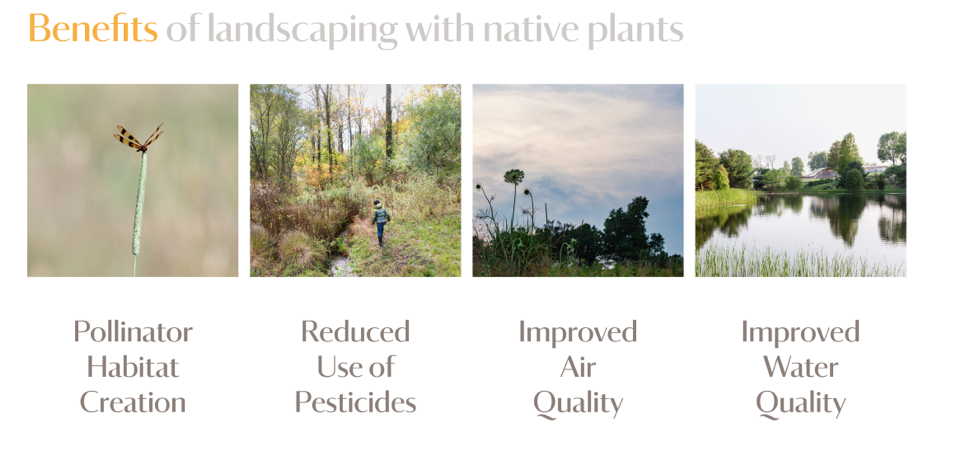
Source: Grace Farms Foundation
Native plants compared to non-native plants offer many more benefits to the environment. Lawns which are a monoculture, are often comprised of non-native species such as Bermuda grass from Africa, take up 40 million acres in the U.S., according to an often-quoted 2005 NASA study.
Turf grasses are the single largest irrigated crop in our country. In Connecticut, grass is also our largest monocrop, comprising over 265,000 acres state-wide. Our lawns, however, are a biological desert, or monoculture, void of the diversity of life.
The monoculture crop reduces the habitat and food for pollinators. In addition, it takes a lot of resources to keep our lawns green and pristine, including pumping millions of gallons of water and dumping millions of pounds of pesticides and fertilizers onto our lawns annually. Moreover, the pollution emitted by gas-powered lawnmowers creates more pollution than our cars.
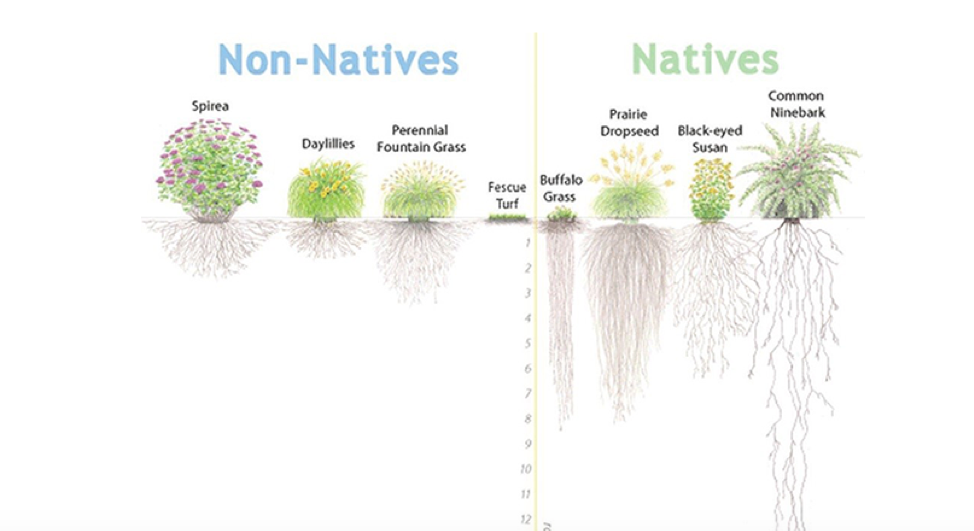
The long and extensive root systems of native plants require much less water; they provide a habitat and food for pollinators. Source: Wildlife Foundation
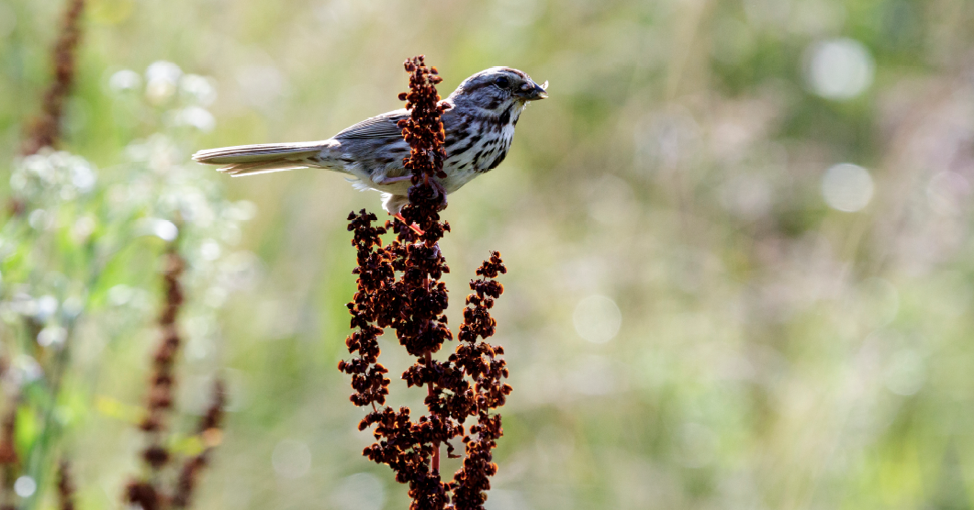
Our restoration of Grace Farms 80 acres brought back over 100 native bird species to our landscape. Photo by Julien Jarry.
Birds are important pollinators, too. On our bird tours, virtual at the moment, with Master Birder Frank Mantlik, we learn the techniques to identify birds by sight, sound, distinguishing features, and habitat.
Matt Szwed, our Technical Director, who has over 25 years of experience in the fields of technology, film and television, recorded the sounds of these pollinators early one morning. See if you can identify some of them in Matt’s recording.
We’ve also brought back the Kestrel Falcons to Grace Farms, which were recently removed from the Connecticut Threatened and Endangered Species List due to restoration of native meadows and the installation of nesting boxes at Grace Farms. Through these combined aforts we have brought back the smallest falcon in North America to our area. The Kestrel Falcon is beneficial to the environment and to farmers due to its consumption of crop pests.
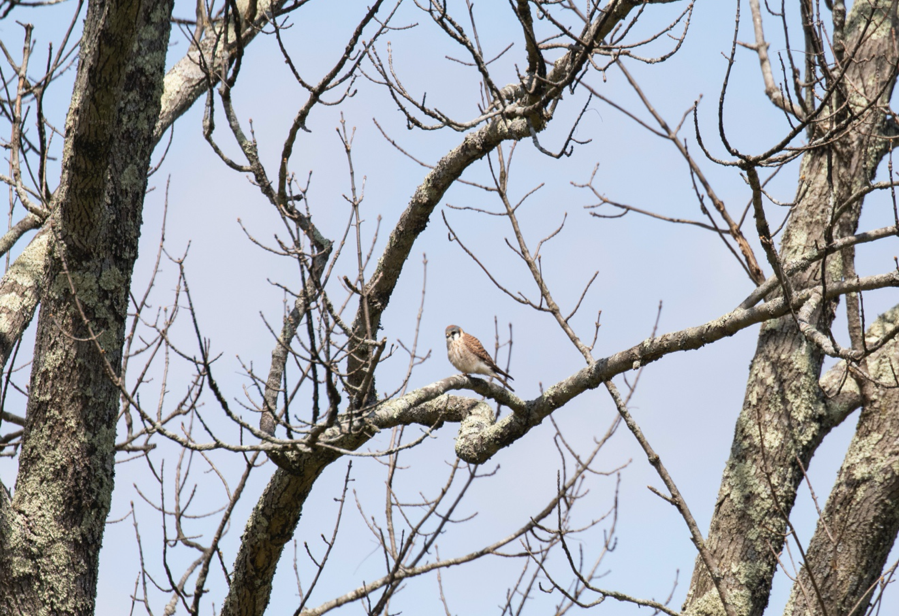
An American Kestrel at Grace Farms. Photo by Julien Jarry.
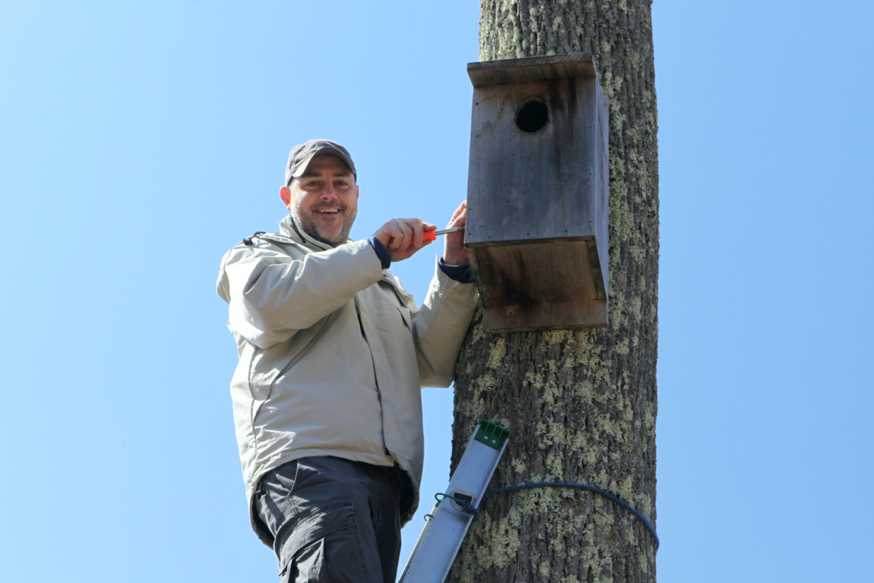
Mark Fowler installing an American Kestrel nesting box at Grace Farms.
While there is still much work to do to restore our pollinator habitats, we are making progress together. This gives me hope.
Feature photo by Julien Jarry.

